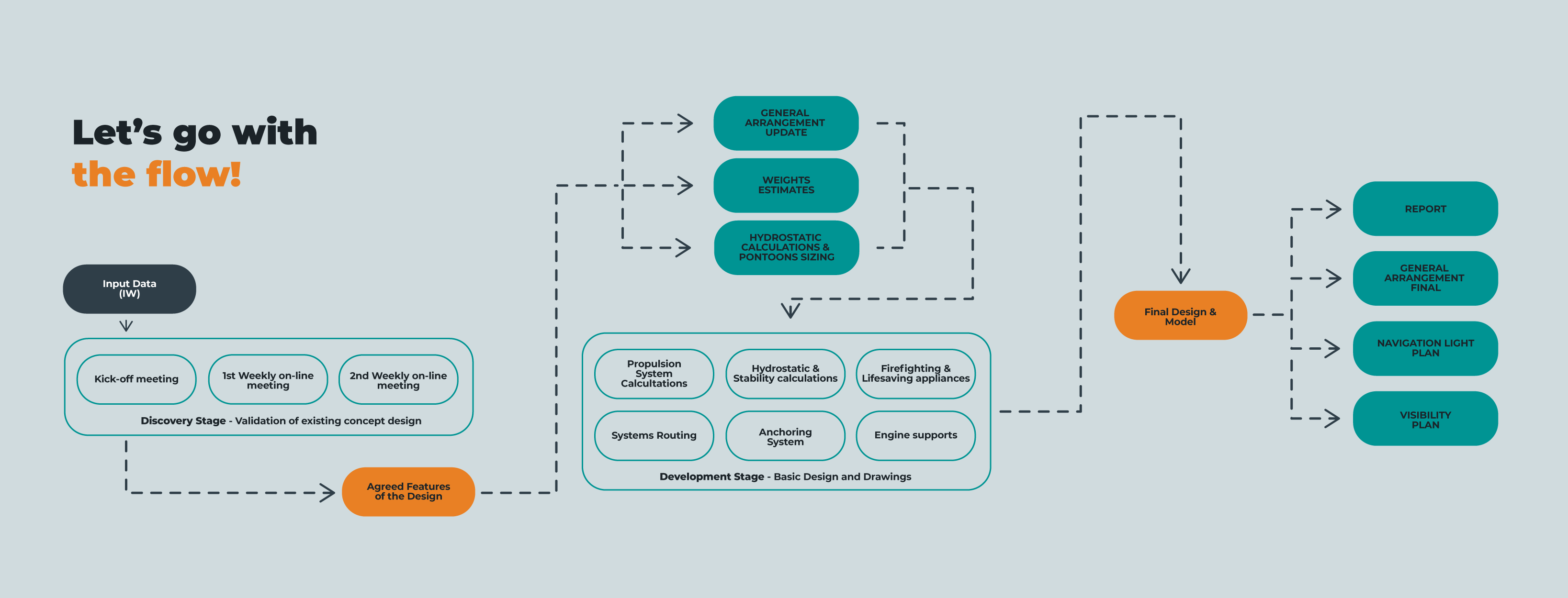Here in GLO Marine we understand every project is unique, so we tailor our project management activities accordingly, for every single project.
In this article we will be discussing the workflow – our most used tool from the GLO project management toolbox that considerably enhanced performance during remote work. We are also presenting a small case study based on our on small crafts projects, exploring how using this tool can benefit both project interaction and costs.
A workflow is a visual tool/ diagram of a structured set of activities and branching possibilities that:
-
-
- Depicts the sequence of activities agreed within a project, the interrelations with other activities, who does what, when, and what is affected by changes to any given item on the flow;
- Always produces the agreed and desired result;
- Empowers the project manager, sets a clear relationship with the client and builds confidence for all team members (especially working in a remote environment).
-
Nowadays, workflows are a must in most engineering industries, especially on interdisciplinary fast track projects that integrate distributed teams, several vendors, clients and internal team management.
Fast track projects eliminate the possibility of flattening the learning curve, moreover they don’t allow for a learning curve. That’s why we focus on clarity, results and enhanced project controls.
Let’s describe how we use workflows in our projects. We perform such a flow in the initiating phase (at the beginning of the project), discuss it in detail internally, explain it to the Client and agree upon it. We invest time in the setup phase and we gain from it massively in the execution phase.
This allows for a better understanding of the scope, mapping the activities and interactions (while also linking them to the schedule and showing dependencies) and getting all stakeholders fully onboard with the:
-
-
- Engineering process;
- The flow of information within that particular project;
- Required interactions for the agreed sequence of activities.
-

Benefits
After using it on several small craft projects, we observed several benefits:
Financial implications
-
- Reduced costs for both Client and GLO;
Once we all agree on the “map of the project” we work proactively to assist one-another to achieve our goals and increase the chances of completing the project successfully.
-
- Avoid re-work;
Workflows are a way to visually communicate the process to both parties. When the process is clear, re-work is avoided.
-
- Reduced number of changes;
Setting a workflow from initiating phase sets clear grounds and commitment for all parties to get the project completed successfully.
-
- Reduced down time;
When everybody works in a synchronized manner down-time is reduced to the minimum. The workflow has, in our experience, assisted in obtaining this synchronicity and laying the grounds for proactivity.
-
- Reduced schedule and avoiding delays;
Visualizing the exact sequence of activities assists tremendously in arranging and rearranging them in such a manner as to achieve the minimum duration obtainable and also to prevent delays.
Interaction
-
- Set clear expectations and clearly show phase gates;
Instead of uncertainty about whose responsibility it is to complete different tasks, a workflow defines it for everybody.
-
- Set-up a visual tool for helping assess any impact on changed input data;
If input data is changed during the process, the workflow helps identify the activities (completed or on-going) impacted by project changes.
-
- Set “visual” boundaries for all stakeholders;
If there is something causing confusion or not properly understood, we always reference to our “map” which assist us in clarifying things. Almost every time it did help and it was a welcome and appreciated tool for this job.
It is of high importance to also clearly set and show the boundaries. All necessary steps should be taken to eliminate confusion as early as possible in the project. This tool has helped us in this endeavor. It has also eliminated some of the guesswork, saving time and building trust and collaboration through a correct strategy from the start of the project.